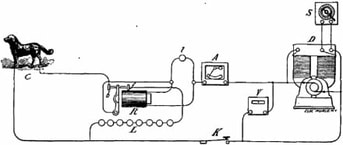 We often see signs of organizational competition in the market turning into battles fought on multiple fronts. Apple and Samsung have good-looking telephones that compete vigorously in the market, and their lengthy Patent War is famous. Ride-sharing firms Lyft and Uber compete in the market but have also accused each other of covertly placing fake orders and then canceling them. They also fought in the media when Uber used taxi workers’ protest against the U.S. immigration ban as a business opportunity: Lyft struck back with a strong stance against the morality of Uber’s efforts and made a donation to the ACLU, which accelerated the trend of #DeleteUber across social media. Just how far will organizations go in such battles? A forthcoming article by Benjamin M. Cole and David Chandler in Administrative Science Quarterly looks at the famous War of the Currents between Edison and Westinghouse and finds ample evidence of how such battles can escalate. The War of the Currents started when Westinghouse realized that the Edison direct current (DC) electrical system could not be used for long-range transmission of power. He obtained the necessary patents for alternative current (AC), which transmits much more efficiently, and his company was soon a major competitor of the Edison companies. The market competition expanded into a full-blown rivalry when Edison started using competitive slander to turn media and consumers against AC and Westinghouse. Edison’s recipe was simple: Make the newspapers publish stories about experiments showing that AC easily killed dogs and other animals, so that people would associate AC with danger—unlike the safer DC. A simple strategy, but also a grotesque one. To make it work, he needed to conceal his association with the experiments, having an electrical engineer act as the front man, and also make them seem legitimate by conducting them in famous institutions’ facilities. As a final step, his company made direct contacts with politicians who could influence the marketplace. The campaign worked because it was well orchestrated and because Westinghouse initially thought there was no need to strike back. This left Westinghouse exposed, and when his company did respond, it chose an ineffective approach—directly countering the Edison attacks through attempts to discredit the message and expose Edison’s methods as sensationalist and immoral. This was ineffective because Edison had chosen a vulnerable point to attack: although killing dogs is immoral, it correctly illustrated that AC is more dangerous than DC at comparable voltages. I suppose we could have all ended up with expensive DC as a result of this rivalry. But in the end, Westinghouse won by returning to the foundation of the AC advantage: it is a superior system for distributing electrical power over long distances. He won the bid to illuminate the city of Chicago as part of the World’s Columbian Exposition. He sank considerable resources into the contract, making it a financial loss but a spectacular success as a PR event for AC and for Westinghouse technology. Soon after, AC dominated and even Edison started marketing AC systems. The War of the Currents has many lessons for current organizations, and I want to highlight one disturbing and one promising lesson. The disturbing lesson is the effectiveness of attacking: when the attacker picks the target well and is willing to go far, the rival is very likely to get hurt. The promising lesson is the effectiveness of sticking to basics: when the rival emphasizes its own strength rather than countering the attack directly, its chances of recovering are best. Cole, B. M., and D. Chandler. 2019. "A Model of Competitive Impression Management: Edison versus Westinghouse in the War of theCurrents." Administrative Science Quarterly, forthcoming. Comments are closed.
|
Blog's objectiveThis blog is devoted to discussions of how events in the news illustrate organizational research and can be explained by organizational theory. It is only updated when I have time to spare. Archives
May 2024
Categories |
 RSS Feed
RSS Feed